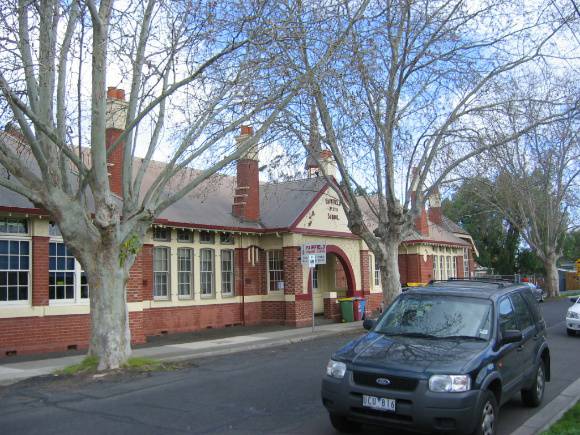| Back to search results » | Back to search page » |
|
FAIRFIELD PRIMARY SCHOOL NO. 2711
Other NamesAlphington State School (Former) , Fairfield Park State School Location1-5 LANGRIDGE STREET and 176-206 WINGROVE STREET, FAIRFIELD LevelIncluded in Heritage Overlay |
|
Statement of Significance
What is significant? - The late 19th century and pre-First World War buildings. Non-original alterations and additions to the above buildings, the fencing, later 20th century buildings within the site and other vegetation on the site are not significant. How is it significant? Why is it significant? Architecturally, the school buildings are significant as good examples of the use of the Arts and Crafts style in the construction of institutional buildings, with typical features that are externally relatively intact. Aesthetically, they form an important part of the streetscape at the corner of Langridge Street and Fairfield Road. The mature trees provide a related setting and are evidence of the importance of Arbor Day in the lives of Victorian schoolchildren in the early twentieth century. (Criteria D & E)
Fairfield Primary School No. 2711, at 1-5 Langridge Street and 176-206 Wingrove Street, Fairfield. The following elements contribute to the significance of the place:
- The mature Moreton Bay Fig (Ficus macrophylla) adjacent to Langridge Street, and Pepper Trees (Schinus molle) along the Fairfield Road boundary.
Fairfield Primary School No. 2711 is of local historic, architectural and aesthetic significance to Darebin City.
Historically, Fairfield Primary School No. 2711 is significant as one of the first State schools built in the City of Darebin. It was one of two schools built in the late 19th century to supplement those at Northcote, Gowerville and Preston North (which had all been built by 1875) in response to the rapid growth experienced by the central parts of Darebin during the 1880s and early 1890s. Its subsequent enlargements are testament to the continuation of this growth into the 20th century. The school is also significant as an example of the work of noted Public Works Department architect, S.C. Brittingham and illustrates the development of infant school design in the early twentieth century. (Criteria A & H)
Group
Education
Category
School - State (public)




